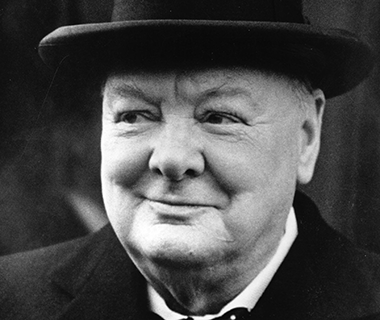Waterloo
Waterloo
June 1815 – WATERLOO – 71st
When Napoleon abdicated in 1814, the Armies of the Allies were largely disbanded or re-deployed, with many British units being sent to America. There was consternation, therefore, when Napoleon escaped from Elba, raised a large army, seized control of France and threatened Europe all over again.
The allies of 1814 re-mobilised but only two of their armies were suitably placed for quick action against the French. These were the Prussian army under Marshal Blucher and another under the Duke of Wellington consisting of British, Dutch, Belgian and other German contingents. Both armies were deployed in Belgium but the other main Allied armies, those of Russia and Austria, were still a long way from what was likely to be the main theatre of operations in North-West Europe.
Napoleon resolved to fall upon and destroy the Allied forces in Belgium, thus leaving himself free to deal with Russia and Austria. This strategy of falling upon divided allies and destroying them in detail was one which he had used well in other campaigns. By skilful deployment and quick movement he concentrated his army at Charleroi on the Belgian frontier. Then on the 16th of June he attacked the Prussians, who were deployed in an exposed position at Ligny, and defeated them . They withdrew under cover of darkness and Napoleon assumed that they would fall back eastward, on their lines of communication. He was wrong. The Prussians withdrew northward, where their fresh IV Corps was in position and from where they would be able to make contact with Wellington.
Wellington, although surprised, rallied and marched to meet Napoleon. After some preliminary fierce fighting, he took up a defensive position on a long ridge near the village of Waterloo, about ten miles south of Brussels. His plan was simple. His army was largely composed of partly trained and, in some cases, ill-equipped young soldiers, hurriedly collected together from wherever they could be raised.
‘An infamous Army’ he called it – but that was before the battle. Certainly, it bore no comparison with his Peninsular Army, although he did have a number of his old Peninsular Regiments, one of which was the 71st.
Judging that his army was incapable of complicated manoeuvring, he decided to hold his ground, knowing that the French must attack him. He chose mainly reverse slopes, placed his few experienced Regiments at what he anticipated would be the most important positions, and determined to outfight the French. When they had been sufficiently reduced, his army would charge them, inflicting final defeat.
Napoleon duly attacked on 18th June and the battle which ensued was one of the hardest and bloodiest ever fought. It was also one of the most decisive, since the fate of Europe rested on the result.
All day the French attacked. Their very first efforts were nearly successful, since they used infantry, cavalry and artillery in skilful combination. They were beaten back by dogged infantry defence and by a magnificent heavy cavalry charge. There followed repeated charges by enemy cavalry, which were held by the infantry forming square and denying any ground. The French cavalry was almost totally destroyed, but Allied casualties were heavy too and the result of the battle remained in doubt.
‘Every moment was a crisis at Waterloo’. Towards evening the vanguard of the Prussian Army (which had rallied from its earlier defeat), began to deploy on the French right flank, slowly forcing it to give way.
Napoleon, realising that he must defeat the Allies before the Prussians’ main body came up, or lose everything, made his last throw – he committed his reserve, the famous French Imperial Guard, ten thousand strong, to attack the allied line. The Guard, an army within an army, had never been defeated. The final charge was made, but this time was unsuccessful. The Guard retreated, the Allies charged and Waterloo was won, but with 40,000 dead in the small area of the battlefield. Napoleon’s tyranny was over, this time permanently.
The 71st played a full part in this great battle. Assigned to Adam’s Light Brigade on the right of the battlefield, they first endured over two hours of intense artillery fire. When they moved, they left many dead and wounded on the ground. They then repulsed seven cavalry charges, during one of which the Duke, attended only by his trumpeter, took refuge in their square. Towards evening, following the example of the 52nd and with the 95th in close support, they charged the Guard and drove it back. Leading the final advance, the 71st assaulted the Guard’s reserve positions and captured a battery, one of whose guns they turned around and fired at the retreating enemy. This is thought to have been the last shot of the battle. An original painting of this incident entitled ‘ The Last Gun at Waterloo’ is in the Regiment’s possession.
No battle honour inscribed upon the Regimental Colours of the British Army has been harder fought or better deserved than ‘Waterloo’, in the course of which the 71st lost 16 officers, 11 sergeants and 187 other rank and file.
After the battle, General Clinton, who commanded the right flank, wrote :
“The manner in which the several regiments, 52nd, 71st and 95th discharged their duty was witnessed and admired by the whole army”.
Opening times
We are open Monday -Thursday 9am-4pm and Friday 9am-3pm. We are closed over Christmas and New Year.
Admission
Entry to the museum is FREE although donations are most welcome. If you are bringing a larger groups it's best to let us know in advance.



Get in Touch
- call us
0141 332 5639
- our address
518 Sauchiehall Street, Glasgow, G2 3LW, Scotland
